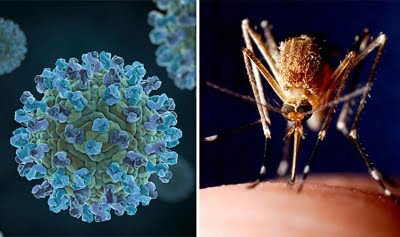(WNV) arrived in New York City in 1999 and soon grew into an “epidemic” characterized by a sea of contradictions.54 Medical press agencies proclaimed the “first arrival of the West Nile virus to the Western Hemisphere”55 but a more accurate description of the situation would be the “first testing of the West Nile virus in the Western Hemisphere.” Mayor Giuliani personally announced the epidemic. He also announced the immediate commencement of a six-week pesticide spray campaign over the city, dispensed by helicopters. Meanwhile, the TV and newspaper headlines chanted, “The Deadly Virus.” The disease was at first attributed to the St. Louis encephalitis virus (SLE) but a few weeks later blame shifted to West Nile virus. The aerial pesticide spraying occurred in dozens of cities.
The United States Geological Survey (“USGS”) issued a press release one year later “confirming” the pathological effect of WNV on crows. This was hyped and widely distributed. Having read many other virological studies, I found the USGS results incredibly odd. The crows were injected intramuscularly with a virus extract and a few days later all met death. The filter used to separate the virus from tissue extract was nearly six times the diameter of the virus.56 Nearly all non-injected crows in the same cage also died. The success of the experiment was too convincing to be true, especially for a study that did not employ the common, harsh, intracranial injection method. The study outcome was also odd because WNV had been considered a mild virus and not especially dangerous to birds. The USGS laboratory ignored my repeated inquiries for the published details. After going through another scientist, who contacted the USGS, I received an emailed response from the USGS indicating low confidence for their study. The agency indicated their study would not be published or discussed and they expressed an intention to perform a better experiment in the future.
SLE and WNV epidemics occur annually in air-polluted petrochemical regions (such as eastern New Jersey and St. Louis) during the warm spring and summer months, with an apex in July and August. The incidence correlates daily with air pollution brought to ground level by warm air and loss of convection efficiency for exhaust sources. SLE epidemics have a long history in the US (in petrochemical regions) and these epidemics don’t spread infectiously to other regions. The two great epicenters for WNV/SLE disease are the two great petrochemical industrial regions in the US–southern Louisiana and New Jersey.
During the summers of 1999 and 2000, air pollution levels reached record levels, correlating with the incidence of “West Nile virus” cases, both human and avian. The gasoline additive MTBE represents perhaps the greatest production volume for any industrial poison in the US, yet it has received little publicity. The public became aware of its dangers only when the EPA suggested that MTBE be phased out on July 27, 1999. That date also represents the apex of the West Nile virus avian epidemic for 1999.63
Like so many widely dispensed industrial poisons, the physiological effects of MTBE have only become known through usage on the public. However, Dr. Peter Joseph correlated MTBE with neurological disease in his 1997 study, “Changes in Disease Rates Following the Introduction of Oxygenated Fuels.” Neurological symptoms also characterize West Nile virus disease. Avian mortality further distinguishes this “viral” disease. Yet, avian mortality is an early warning system for human air pollution disease, as evidenced by the traditional air assay test, the “miners’ canary.”
HERE ARE THE FACTS ON THE WEST NILE VIRUS FACTS:
- There is no such thing as a WEST NILE VIRUS. It has never been demonstrated to exist.
- The bird experts at the Audubon society examined thousands of birds and concluded that they were dying of pesticides.
- There is a big difference between a parasitic “infection” and what is called a viral “infection” – there is no such thing as a viral “infection”. A virus is a piece of dead meat. A cell fragment. Anything containing DNA or RNA can only be sourced from a living cell. The term “live virus” is an oxymoron. No virus has life. No virus can reproduce itself. The two basic requirements of life is metabolism and reproduction. The virus possesses neither. Most life on earth is a single cell, non nucleated bacteria that possess the basic requirements for life, metabolism and reproduction. To Quote my good friend, James Pershing Isaacs, MD, author of Complementarity in Biology – Quantization of Molecular Motion. John Hopkins Press 1969, “Viruses and rickettsia do not seem to be free-living bions….Viruses may be about the size of bions, but possess no plasma membrane. Even for replication ability, they depend upon the environment of cellular hosts or artificially supported metabolism. Viruses are analagous to subatomic particles, and rickettsiae to chemical free radicles trapped in a matrix. We suggest that viruses may be considered as sub-bionic particles and ricketsiae as “parasitic” bions, entrapped in cells.”



